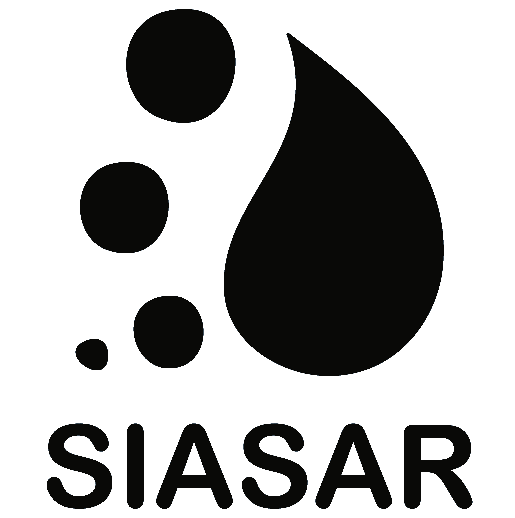Difference between revisions of "Survey Library / Standards: WASH & Health / SIASAR"
From Akvopedia
(Published from sandbox) |
|||
| (8 intermediate revisions by 2 users not shown) | |||
| Line 4: | Line 4: | ||
|- | |- | ||
| '''Name''' | | '''Name''' | ||
| − | | colspan="2" | Sistema de Información de Agua y Saneamiento Rural (SIASAR)<br> | + | | colspan="2" | '''Sistema de Información de Agua y Saneamiento Rural (SIASAR)'''<br> |
| − | + | Translation:<br> | |
Rural Water and Sanitation Information System | Rural Water and Sanitation Information System | ||
|[[Image:SIASAR logo.png|center|100px|link=https://globalsiasar.org/en/]] | |[[Image:SIASAR logo.png|center|100px|link=https://globalsiasar.org/en/]] | ||
| Line 189: | Line 189: | ||
| '''Standardized Survey Profile Form (SSP)''' | | '''Standardized Survey Profile Form (SSP)''' | ||
| colspan="3" | | | colspan="3" | | ||
| − | * [ | + | * [[Survey Library / Surveys: WASH & Health / Water Supply System | Water Supply Systems]] |
| − | * [ | + | * [[Survey Library / Surveys: WASH & Health / Community WASH | Community WASH Community]] |
| − | * [ | + | * [[Survey Library / Surveys: WASH & Health / SIASAR Service Provider | Service Provider]] |
| − | * [ | + | * [[Survey Library / Surveys: WASH & Health / Technical Assistance Provider | Technical Assistance Provider]] |
|- | |- | ||
| '''Date standard was last updated''' | | '''Date standard was last updated''' | ||
Latest revision as of 05:11, 14 December 2020
SIASAR
| Standard Profile | |||
| Name | Sistema de Información de Agua y Saneamiento Rural (SIASAR) Translation: |
||
| Sector | Water Sanitation and Hygiene (WASH) | ||
| Creator | Governments of Honduras, Nicaragua and Panama | ||
| What the standard measures | Rural water supply and sanitation service | ||
| Priority indicators | Dimensions | Components | Indicators |
| Water Service Levels | Accessibility | Improved water supply coverage Access time | |
| Continuity | Service hours per day | ||
| Seasonality | Minimum supply during the year | ||
| Quality | Physiochemical quality Bacteriological quality | ||
| Sanitation and Hygiene Service Level | Sanitation Service Level | T1 / T2 improved sanitation coverage Own / Shared improved sanitation coverage | |
| Personal Hygiene | All household members hand-washing Partial household members hand-washing Improved sanitation use | ||
| Household Hygiene | Household safety water management | ||
| Community Hygiene | Garbage collection or treatment Household open defecation | ||
| Schools and Health Centers | Water Supply in Schools | Water service level | |
| Water Supply in Health Centres | Water service level | ||
| Sanitation in Schools | Sanitation service level - Student body Sanitation service level - Staff Hygiene service level - Student body Hygiene service level - Staff | ||
| Sanitation in Health Centres | Sanitation service level - User Sanitation service level - Staff Hygiene service level - User Hygiene service level - Staff | ||
| Water System Infrastructure | System Autonomy | Service days without production | |
| Production Infrastructure | Catchment area status Conduction status Storage status Distribution status | ||
| Water Catchment Area Protection | Catchment protection area status | ||
| Treatment System | Treatment system typology Treatment system functioning Chlorine disinfection | ||
| Service Provision | Organization Management | Legalization and directive structure Ordinary operation Equity within the organization Economic management and accountability | |
| Operation & Maintenance Management | O&M general assessment Basic operation with chlorine O&M Regulation Operative micro-reading coverage | ||
| Economic Management | Collection efficiency rate Cost coverage rate Liquid assets rate Billing efficiency rate Solvency rate Debt service coverage rate | ||
| Environmental Management | Catchment area preventive measures Catchment area corrective measures Environmental sanitation promotion | ||
| Technical Assistance Provision | Information Systems | Computer equipment Internet access | |
| Institutional Capacity | Transport equipment Water quality measurement equipment Technicians / Community rate Economic resources | ||
| Community Coverage | Supported communities percentage | ||
| Intensity of Assistance | Technical assistance typologies Technical assistance concentration | ||
| Links to SDGs |
1.4, SDG indicator definitions are explained in this document. | ||
| Key users of the standard | Governments of: Bolivia, Brazil, Colombia, Costa Rica, Dominican Republic, Honduras, Kyrgyzstan, Nicaragua, Mexico (State of Oaxaca), Panama, Paraguay, Perú | ||
| How users analyze data | SIASAR provides a conceptual model for information analysis. The model guides users in comparing data on indicators that measure the following rural water supply and sanitation services:
Data is analysed at national and regional levels from the following perspectives:
| ||
| How users act on data |
| ||
| How users create reports aligned with the standard |
National governments produce the following types of reports:
| ||
| Where users submit reports |
Reports Inventory: http://www.siasar.org/en/reports | ||
| Languages in which standard is available | English, Spanish, Portuguese, Russian | ||
| Standardized survey template(s) |
| ||
| Digitized in Akvo Flow |
| ||
| Excel versions of Standardized surveys |
| ||
| Standardized data visualization dashboards | |||
| Standardized Survey Profile Form (SSP) | |||
| Date standard was last updated | 2017 | ||
| Current version of standard (# or name) | Version 10 | ||
| Source | http://www.siasar.org/en | ||

